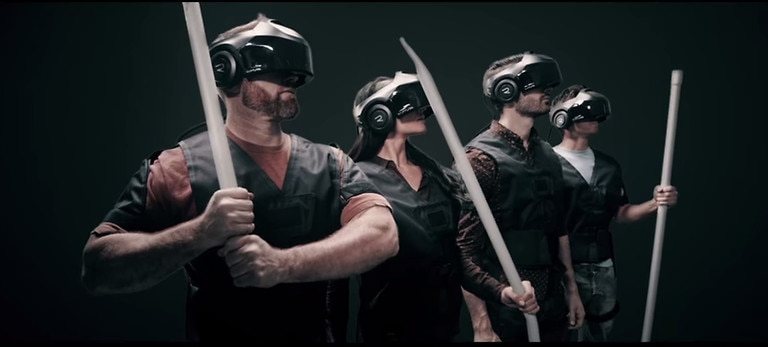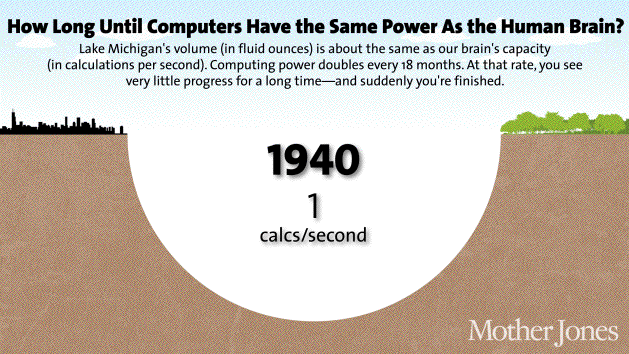Incomprehensible wisdom
Our deep capability for comprehending our surroundings, catching on, making sense of things, or figuring out what to do – that’s intelligence. It’s a general mental capability that involves the ability to reason, plan, solve problems, think abstractly, comprehend complex ideas, learn quickly and learn from experience. At the moment, we use our fantastic intellects to create even brighter minds than our own – AI or artificial intelligence, which at some point will evolve into ASI or Artficial Superintelligence. ASI is an intellect that is much smarter than the best human brains in practically every field, including scientific creativity, general wisdom and social skills. So ASI wouldn’t be just another a fancy chess-playing computer.
Forces at play
The troubling thing about humanity’s race for the creation of AI is that a large and varied group of parties tend to be racing ahead at top speed, consumed with dreams of the money and awards and power and fame. And what usually happens when you’re sprinting as fast as you can? There’s not much time to stop and ponder the dangers.
“Before the prospect of an intelligence explosion, we humans are like small children playing with a bomb”, said Oxford philosopher Nick Bostrom about our immaturity and the ASI we’re not ready for.
Black market or terrorist organizations and stealth tech companies want to keep developments a secret from their competitors, not to mention shady governments, so we can’t just shoo all the kids away from the ticking bomb. There’s no way to estimate what’s happening.
The world – revolutionized beyond imagination
So is the future all gloomy? It could be the other way around. ASI could create opportunities for us to vastly increase our own intellectual and emotional capabilities. If ASI doesn’t find what it needs, it will come up with the next generation of tools to help it reach its goal so ASI would most likely be able to solve every problem in humanity. There might be a super-bright future ahead:
Health
When speaking of the merging of humans and AI, scientist and inventor Danny Hillis compares what’s happening right now to that point “when single-celled organisms were turning into multi-celled organisms.” Humans would be able to think billions of times faster than we do now. Because of artificial additions to the brain, we might be able to communicate with all the information in the cloud. Nanotech theorist Robert A. Freitas has already designed blood cell replacements that, if one day implemented in the body, would allow a human to sprint for fifteen minutes without taking a breath. At IMM, he’s working on molecular manufacturing – a future technology where robotic mechanisms will position and react molecules to build systems to complex atomic specification. Future nanobots would be in charge of delivering perfect nutrition to the cells of the body, intelligently directing anything unhealthy to pass through the body without affecting anything. Yes. Eat all you want. No fat.

Here, you can read about nanobot micromotors delivering medical payload in a living creature for the first time. DARPA is focusing on treating soldiers’ health problems by using the person’s own immune response instead of external medication and therapy. They’re calling this initiative ElectRx (pronounced electrics) – miniaturized sensors and medical devices that could control nerve signals to promote healing.
World hunger
ASI could use things like nanotech to build meat from scratch that would be molecularly identical to real meat – in other words, it would be real meat. All animals would be grateful, for sure.
Global warming
ASI could first halt CO2 emissions by coming up with much better ways to generate energy that had nothing to do with fossil fuels. Then it could create an innovative way to remove excess CO2 from the atmosphere. But we can’t wait for ASI to fix this threat for us. It’s time to hold carbon polluters accountable, raise our collective voice and do something about our only planet (we need it more than it needs us). The future can’t be anything else than sustainable, right?
Poverty
Our debates over how economies should be run and how world trade is best facilitated, even our haziest contemplations in philosophy or ethics, would all be painfully obvious to ASI.
Death
Roughly 90 percent of everybody who has been alive has died by now. Aging accounts for roughly two-thirds of all human people who die – an annual death toll of greater than the population of Canada. But ASI could allow us to conquer our mortality. The body is just a bunch of atoms and ASI would presumably be able to easily manipulate all kinds of atomic structures. Time will continue moving, but aging doesn’t have to.
Ray Kurzweil believes that artificial materials will be integrated into the body more and more as time goes on. He talks about intelligent nanobots in the bloodstream who could power their own movement and perform countless tasks for human health, including routinely repairing or replacing worn down cells in any part of the body. If perfected, this process (or a far smarter one ASI would come up with) wouldn’t just keep the body healthy – it could reverse aging.
In his TED Talk, Nick Bostrom examines the future of humankind and asks whether we might alter the fundamental nature of humanity to solve our most intrinsic problems.
Beyond life
Nanobots in the body could suppress the inputs coming from our senses and replace them with new signals that would put us entirely in a new environment, one that we’d see, hear, feel and smell. Virtual reality would take on a new meaning. ASI could assist us in creating a highly appealing experiential world in which we could live lives devoted to relating to each other, experiencing, personal growth and to living closer to our ideals. And of course joyful game-playing, which takes us to the next topic about what’s happening here and now:
Living an adventure
Imagine that you’re running across a maze of endless caves with your buddies, slaying dragons, exploring alien biospheres and saving the world together – all in one afternoon. Now it’s becoming reality. Well virtually, anyway. It was just a matter of time before we’d see the first gaming centers for virtual reality and here comes The Void – super augmented reality, one step closer to changing the way we play video games.
The Void resembles laser tag, but as soon as your special vest and virtual reality glasses are on, it’s a whole new thing. You can interact with physical objects and things like wind machines enhance the experience. The Void will come to the major cities in the US, South America, Australia and Europe in the near future (starting in Salt Lake City).

Fresh ideas
Dialog is the essence of intelligence and at the heart of learning, evolution and innovation. The question is sometimes more important than the answer, so imagine ASI that could help us refine or expand the way we approach and think about new situations and solve challenges. So what about an artificial superintelligence that understands the true value of information, meaning it can compute what the next best question to ask is?
And then again, as Nick Bostrom said:
”We could mistakenly elevate a subgoal to the status of a supergoal. We tell it to solve a mathematical problem and it complies by turning all the matter in the solar system into a giant calculating device, in the process killing the person who asked the question.”
And machine learning researcher Eliezer Yudkowsky put it this way:
“The AI does not hate you, nor does it love you, but you are made out of atoms which it can use for something else.”
This will not happen in my lifetime, right?
According to Wikipedia, most surveyed AI researchers expect machines to eventually be able to rival humans in intelligence, though there is little consensus on timescales. At the 2006 AI@50conference:
- 18% of attendees reported expecting machines to be able “to simulate learning and every other aspect of human intelligence” by 2056
- 41% of attendees expected this to happen sometime after 2056
- 41% expected machines to never reach that milestone
In a survey of the 100 most cited authors in AI (as of May 2013, according to Microsoft Academic Search), the median year by which respondents expected machines “that can carry out most human professions at least as well as a typical human” with:
- 10% confidence is 2024 (mean 2034, st. dev. 33 years)
- 50% confidence is 2050 (mean 2072, st. dev. 110 years)
- 90% confidence is 2070 (mean 2168, st. dev. 342 years)
These estimates exclude the 1.2% of respondents who said no year would ever reach 10% confidence, the 4.1% who said ‘never’ for 50% confidence, and the 16.5% who said ‘never’ for 90% confidence. Respondents assigned a median 50% probability to the possibility that machine superintelligence will be invented within 30 years of the invention of approximately human-level machine intelligence.
Nick Bostrom’s paper outlines the case for believing that we will have superhuman artificial intelligence within the first third of the next century.

I’ve created a monster
An example of an inventor with regrets is Albert Einstein, who played almost no role in the development of the atomic bomb but whose discoveries led to it. Guidelines and institutions will never control an invention completely; the inventor will not maintain perfect control and society will have its way.
And us humans are quite fascinated with robots.
________________
AI mini series
This blog post is part of a series about artificial intelligence. Here you can read about lethal autonomy and here’s an article about a world-changing intelligence explosion. What’s happening in the world of AI isn’t just an important topic, but by far the most important topic for our future. How do you think we should prepare for the things to come?
Spread the word. And share your thoughts below.

























